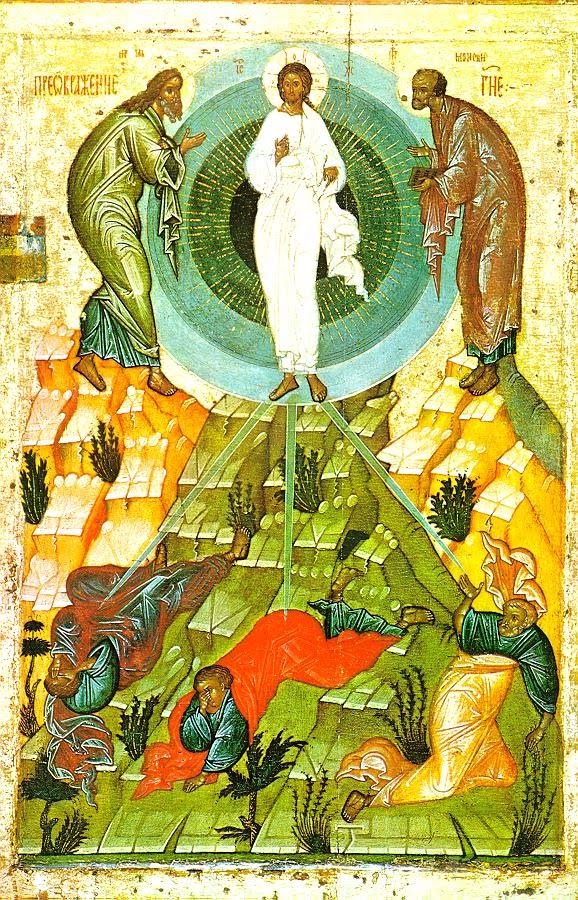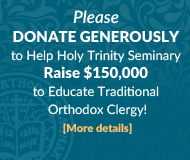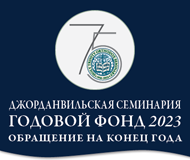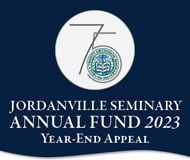News

August 6/19 – Holy Transfiguration of our Lord God and Savior Jesus Christ… Second (“Apple”) feast of the Savior
19 August 2011
In the Transfiguration of the Lord the mystical Divine essence of the One, Who was still called Nazarene, suddenly became visible to the three disciples chosen by Himself, or, in the language of the Church, this Essence proceeded through the human nature of Jesus. Apostles Peter, James and John saw the Son, Whose image shown “like the sun.” At the same time, the Apostles physically experienced upon themselves “the grace of the Holy Spirit, coming, like a noetic light, brining joy” (according to the words of St. Symeon the New Theologian). And when Peter, for a moment being permeated by this Light, cried out: “Lord! It is good for us to be here,” the voice of the Heavenly Father: “This is My beloved Son, in Whom I am well pleased; hear ye Him” (Matthew 17:4) became audible for him, and for James and John.
The author of the Third Gospel, holy apostle Luke, in his description of the Transfiguration offers three most important details: the Lord’s “appearance of countenance” changed during the time of prayer; Prophets Moses and Elias spoke with Jesus “about His departure, which He had to accomplish in Jerusalem” (Luke 9:31); the disciples “were heavy with sleep” and that in some way foretold the unconquerable black sleepiness, that would soon come upon the apostles in the garden of Gethsemane at night.
Transfiguration of the Lord happened on the eve of the Old Testament feast of tabernacles, which is called “the feast of our joy,” “the feast of light” and other. During these days, according to ancient custom, the faithful had to dwell in houses made of branches – “tabernacles,” – which in part signified the corruptibility, instability, and temporary nature of all things earthly. However, at the same time the feast of Tabernacles is also the end of the difficult labor of cultivating the land for months, it is the gathering of the harvest.
“…if Thou willest, let us make three tabernacles here: one for Thee, one for Moses, and one for Elias, – Peter offered the Lord, “for he did not know what to say; for they were sore afraid” (Mark 9:6). According to Bishop Cassian (Bezobrazov), Peter thus tried to hold Transfiguration: for if Christ, the Son of the Living God, is near, and Moses, and Elias, who embody the Law of God and the Prophets, then, it must be that the Kingdom of God “is at the doors”: it either came already, or will come at any moment, and one would not have to go into cruel stone Jerusalem, above which hangs the red hot haze, and one could stay here, in the green, blossoming Galilee, on mount Tabor…
The Church tradition, rising at least to the third century A.D., points to mount Tabor, in the southern part of Galilee, as to the place of the Transfiguration of the Lord.
“Mount Tabor is earthly heaven, exultation of the soul and satiation of the eyes of the orthodox: for some divine grace is present, overshadowing the mountain, which is what inspires the spiritual joy,” – sometime wrote the greek from Crete, author of pilgrim’s notes, John Fokas; his visitation of the Holy Places of Palestine happened in 1187. It is difficult to say what exactly he saw on mount Tabor: some sources state that in 1181 the armies of calif Saladin destroyed the local monasteries and churches, killed those, who lived there, and upon the ruins they built a fortress to deflect the attacks of the crusaders.
The glorious “igumen of the Russian land” Daniel mentions the churches on Tabor in his “Pilgrimage”: “There is a place at the very top of the mountain, as though a stone hill, small, with a sharp top, upon that place Christ our God was Transfigured; there are good churches built there, one in honor of Transfiguration, and the other in honor of the holy prophets Moses and Elias.”
All of this, later on, disappeared at the hands of the destroyers, and only in the XIX century, greek orthodox church was built on Tabor, where one can see the remains of the buildings from the times of the holy Empress Helena, mother of holy Equal-to-the-apostles Emperor Constantine. The guide for the Russsian pilgrims, published in 1894 in Odessa, narrates: “Pilgrims take almost an hour in order to climb to the sacred top of the mountain of Transfiguration. At the walls of the greek monastery the caravan is greeted by the peeling of the bells and the pilgrims go straight into the church… Having venerated at the holy place, the pilgrims situate themselves within the walls of the monastery, however each one is capable. The entire building of the monastery, even the church is wide open to receive the distant travelers. In the evening, our Russian hieromonks, along with the entire brethren of Tabor, clergy from among the pilgrims, and in the presence of the Metropolitan [of Nazareth], serve the all-night vigil, and then, early in the morning, liturgy in Church Slavonic.”
The shining of the uncreated light of Tabor right next to sinful people, who were sleeping, contains within itself a promise: “it is impossible for Him not to enlighten those, who in a worthy manner participate in the Divine shining of His Body within us,” – writes St. Gregory Palamas. It was in this very manner that the blessed Batushka Seraphim of Sarov made his N.A. Motovilov a seer of the mystery and fellow participant of being in the Light of Transfiguration. “Imagine to yourself, in the middle of the sun, in the very shining brightness of its noon rays, the face of a man, who is talking to you. You see the moving of his lips, the changing expression of his eyes, hear his voice, yet you do not see yourself, nor his figure, but only the blinding light, stretching far, and illumining with its bight shining the snow, covering the meadow, and the pieces of snow, pouring from above upon me and upon the Great Elder”, – said Motovilov about what took place.
In continuation of the Old Testament custom, the fruits of the earth are blessed on Transfiguration, the heads of wheat and grapes, “for from it there comes wine, acceptable for the offering of the bloodless sacrifice”.






